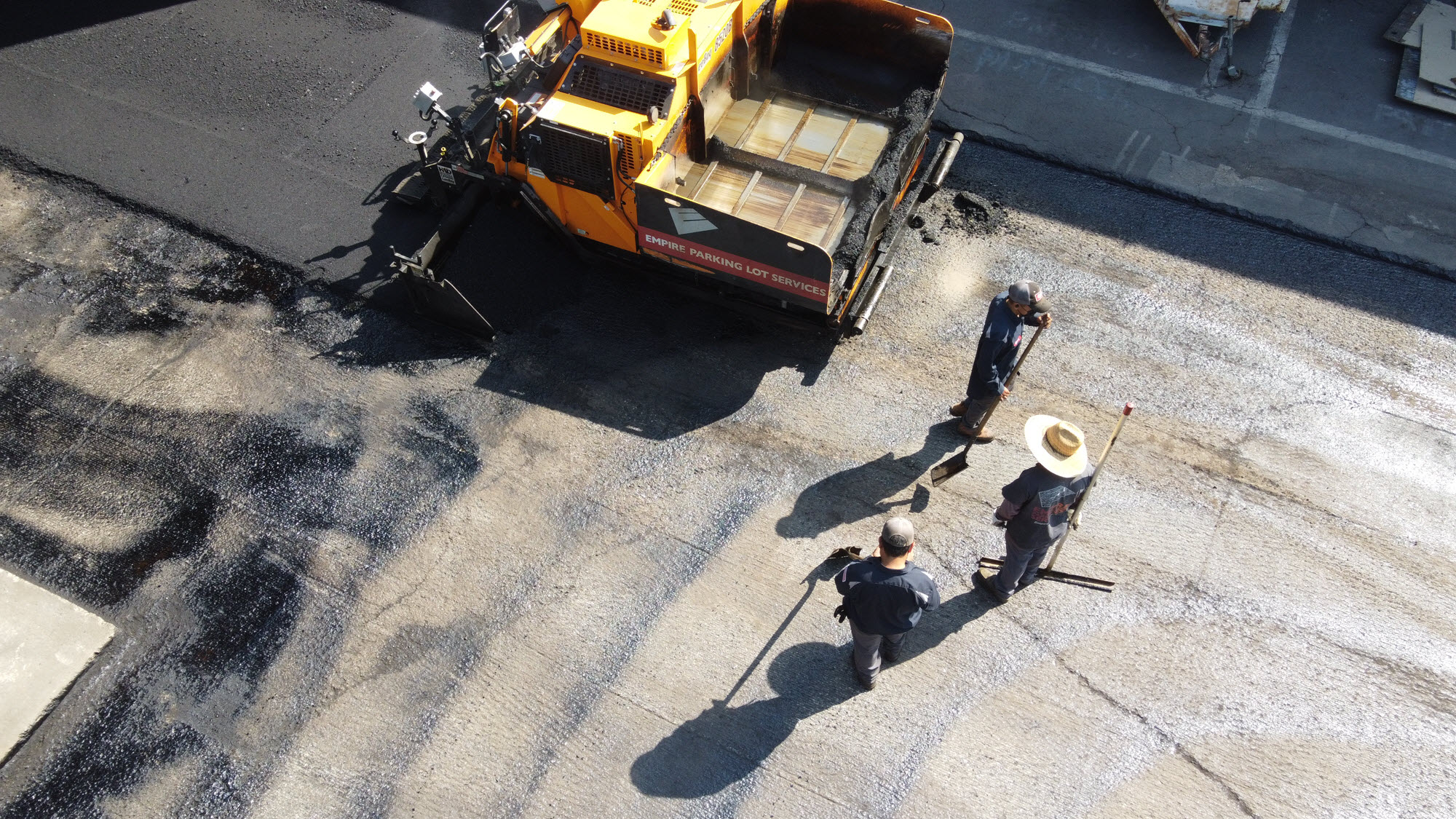Is your parking lot in need of repair? Are potholes causing issues for your tenants or customers? Continued parking lot maintenance is vital to a business's reputation, and a property's value. Facility managers must constantly be on the lookout for ways to keep up their lot's pristine appearance while minimizing costs and staying within budget.
If your asphalt parking lot needs some TLC, is putting new asphalt over the old a viable option? Or do you have to start thinking about removal and replacement?

(Baywood Business Center, Orange)
What Exactly Is an Asphalt Overlay?
An asphalt overlay isn't the same as just paving a new layer of asphalt over the old material and calling it a day. Instead, an asphalt overlay helps repair the top layer of asphalt and makes it like new.
If a paving surface has deteriorated, but still has structural integrity (e.g., it doesn't have a sinkhole or any other major structural issues), then it can be overlaid with new asphalt.
In the overlay process, the very top layer of asphalt is removed, making way for the new asphalt to blend together with the pre-existing material. Uneven or damaged sections of the lot are repaired and/or leveled out before the contractor continues with the rest of the process. The worn-out asphalt surface is paved over with a new layer of hot mix asphalt (HMA), and then that new hot mix asphalt is applied to the specified areas by means of an asphalt paving machine. In addition, a glue-like bonding solution (known as "tack") is applied between the old and new surfaces and fuses the two layers together.
As a result of this process, you're actually putting the old asphalt to good use!
Where Does Asphalt Grinding Fit Into the Picture?
Asphalt grinding (also known as "milling") is a simple way to eliminate that topmost layer of existing asphalt so that the overlay can create a smooth, flawless appearance for your surface, and extend the life of your parking lot. Once the existing asphalt has been milled away, a new layer of liquid asphalt is applied to the surface and creates a strong bond with the new overlay.
Asphalt grinding projects can be big or small. If only a small area of your lot needs to be milled, then your contractor may use a simple walk-behind grinder. For "medium-sized" jobs, many companies use a skid steer grinder with a hydraulic system that can grind through asphalt quickly and accurately. And for large-scale projects, asphalt pulverization equipment is called for. At Empire Parking Lot Services, we provide each of these services depending on the size and scope of the repair job.
What Is an Asphalt Remove and Replace?
You can probably guess from the name what this type of project involves. With an asphalt remove and replace job, the existing asphalt is completely excavated, down to the gravel base that serves as its foundation. If the contractor finds any areas that have a soft sub-base, then they'll undercut those areas and make sure they're properly graded to be level with the rest of the lot.
Once the existing asphalt is completely removed and any soft sub-bases are repaired, a new layer of asphalt will be applied to the base surface, and then compacted to the manufacturer-specified thickness. As you can probably tell, a remove and replace project is much more extensive than an overlay, and is, therefore, more expensive, too.
Of course, in some cases, a remove and replace is the best option for the long-term needs of your property. However, the main reasons to consider a remove and replace instead of an overlay are:
- Your existing lot has serious structural issues
- There are major drainage problems
- There are elevation issues
Is an Asphalt Overlay the Way to Go?
Two decades ago, one of the only viable options to repair a damaged asphalt parking lot was to remove the existing material completely and replace it with totally new asphalt. Alternatively, property owners had to have at least 4 inches worth of asphalt applied over the existing damaged surface. As you can imagine, either option would mean a very costly expense for the business or property owner.
Fortunately, things have changed since then. An asphalt overlay is now a workable solution for many (if not most) cases of parking lot damage. It's a great way to restore a freshly paved look to your lot, but at only a fraction of the cost that's associated with a total removal/replacement project. In fact, most overlay projects only require 1.5" to 2" of depth for the application of the new asphalt material.
Not surprisingly, asphalt overlay has become the go-to method for repairs on streets and roads throughout the United States. It is, by and large, the smartest and most cost-effective method for asphalt repairs available today. At the end of an asphalt overlay project, the surface looks brand-new, the structural integrity of the existing asphalt remains intact, and the effective lifespan of the pavement or lot has been extended by at least a couple of years, if not longer.
A Summary
What's the simple answer to the question: "Is it okay to put new asphalt over old asphalt?" Yes, if it's done properly as part of an overlay. To sum up:
- An asphalt overlay allows you to use your existing asphalt as a base for new asphalt.
- An overlay can be as simple as grinding down a portion of your existing asphalt, applying emulsion to bind the old and new layers of asphalt together, and then compacting the new asphalt to its desired thickness and slope.
- A remove and replace project is the way to go when your lot has structural integrity issues or other major problems.
Contact us at 714-633-0300 today to have our experienced team assist you with your next asphalt repair project. You won't regret partnering with Empire Parking Lot Services for all of your asphalt repair needs!




Comments